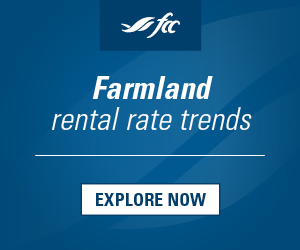Market side: Futures trading basics
LESSON 10: WHY USE FUTURES CONTRACTS?

This monthly educational series will feature the basic workings of the futures and options markets and how they can be utilized to help farmers with risk management.
A FUTURES CONTRACT is simply a legally binding agreement to buy or sell a commodity for delivery, sometime in the future, at an agreed upon price.
It is important to understand the true role of the futures contract. There are a large group of people who view the futures market as a manipulated gambling arena where prices are influenced by speculators. This is a complete fallacy.
The futures market was designed to assist both producers and processors to achieve the best possible price for their product. Whether it is a bushel of corn, an ounce of gold mined in Canada, or the new home you purchased last year for your retirement, the futures market allows all business operators from the smallest farmer to the multi-national corporation to realize the best price for their goods (whether buying or selling) while keeping their products competitively priced.
The futures market has two marketing roles to play:
- Price discovery (not price fixing) Futures market prices depend on a continuous flow of information from around the world and thus require a high amount of transparency. Through world supply and demand factors that include weather, politics, debt default, and government policies, commodity prices can change and, as a result, so can the future price of commodities. This discovery is achieved through an open auction market with producers, processors, and speculators as the participants.
- Risk reduction or transfer The risk reduction or transfer locks in a price (hedge) for future delivery or purchase. This enables one to transfer the risk of future unknown prices to another hedger or speculator. Risks are reduced because the price is pre-set, letting participants know how much they will need to buy or sell and fix their prices. The futures market is active throughout the year and is not seasonal.
The essential components of the futures market include:
- Auction type venue Allows open bidding to discover the price a willing buyer and seller can agree on.
- Liquidity The volume of buyers and sellers participating in the markets. Speculators add to the number of buyers and sellers along with those looking to buy or sell the physical products. This liquidity allows for a tighter bid/ask spread which fine tunes the discovered prices to the nearest penny. Assets that can be easily bought or sold are known as liquid assets.
- Cash market convergence This occurs through contract delivery requirements for grains and live cattle or through cash settlements based on cash feeder cattle and lean hog market livestock prices. Once a given contract expires it should resemble the physical cash price after normal adjustments are made.
- Performance bond (margin) Contract positions are settled daily through performance bonds or good faith (margin) money to cover gains or losses on contract for that trading session. The client’s accounts are balanced on a daily basis and shows losses or profits for the day. This is known as marked to market. •
Marty Hibbs is a 25 year veteran futures trader, analyst, and portfolio manager. Hibbs was a regular guest analyst on BNN for four years. He is currently a grain merchandiser with Grain Farmers of Ontario.
|
Lesson Definitions: Long: To buy a contract. “Go long July wheat.” Short: To sell a contract. “Short November soybeans.” Bull: One who anticipates higher prices. Bear: One who expects lower prices. Basis: The difference between the futures price and your local cash price. Cash price: This is equal to the futures price plus the basis. Chicago Board of Trade (CBOT): Trade arena for corn, soybean, SRW wheat, oats, and rice. Kansas City Board of Trade (KCBOT): Trade arena for HRW wheat. Minneapolis Grain Exchange (MGEX): Trade arena for spring, white, and durum wheat. Intercontinental Exchange (ICE): Trade arena for coffee, sugar, cotton, cocoa. |







